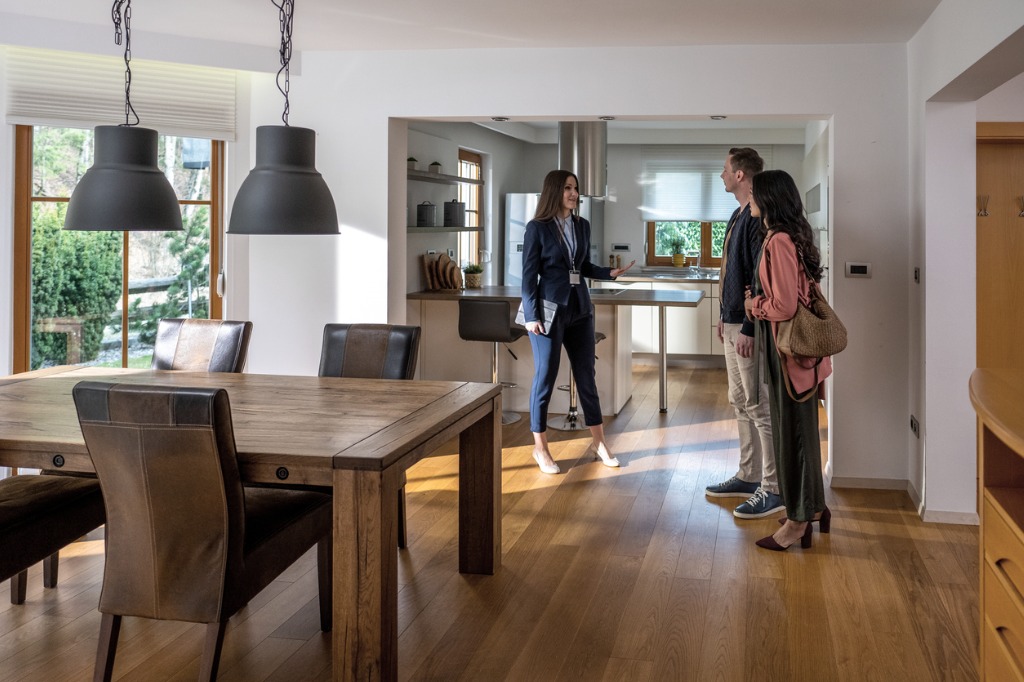So how do you present your property in a way that makes it stand out from the crowd? In this article, you’ll learn how to highlight the unique selling points of your property effectively, why honesty is essential in your listing, and how to use storytelling to create an emotional connection with potential buyers. Additionally, we’ll provide valuable tips on how to make your description search engine optimized to maximize the reach of your listing.
Identifying and Highlighting Unique Selling Points
Every property has something special—whether it’s the location, architecture, or specific features. These unique selling points (USPs) are key to making your listing stand out from the crowd and capturing the interest of potential buyers. But how do you identify these features, and how do you effectively showcase them in a listing?
What Makes Your Property Special? The first step is to analyze the characteristics of your property that set it apart from others. Ask yourself the following questions:
- Location: Is the property located in a highly sought-after neighborhood? Are there schools, parks, or good transportation links nearby?
- Architecture and Design: Is it a historic building with unique architectural details, or is it a modern house equipped with energy-efficient technologies?
- Amenities and Extras: Does the property have special features such as a fireplace, a luxury kitchen, a garden, or a large terrace?
Crafting the USPs in Your Listing Once you’ve identified the unique features of your property, the next step is to present them clearly and concisely in your listing. Make sure this information appears at the very beginning of the description to immediately capture the reader’s attention.
Examples:
- Instead of “Beautiful apartment in Zurich,” you could say: “Light-flooded, centrally located heritage apartment with original stucco ceilings and a modern fitted kitchen.”
- Instead of “House with a garden,” you might write: “Family-friendly home with a spacious garden and its own fruit trees—a green oasis in the heart of the city.”
By focusing on the distinctive qualities of your property, you can engage potential buyers from the outset and increase the chances of a successful sale.
Honesty and Realistic Language
In a property listing, it’s crucial to capture potential buyers’ interest while building trust. While it may be tempting to exaggerate the advantages of the property, honesty is key to a successful sale. Overstatements or false claims can undermine buyers’ trust and lead to disappointment during viewings. This, in turn, may prolong the sales process unnecessarily.
Why Honesty Matters
An honest listing establishes trust and creates a solid foundation between seller and buyer. When the details provided in the listing match the actual features of the property, potential buyers feel respected and well-informed. This increases the likelihood that serious buyers will schedule a viewing and, eventually, make an offer.
Being honest doesn’t mean you can’t highlight your property’s strengths. It’s about presenting these strengths realistically and accurately without setting false expectations. For example, if the apartment has a nice view of the city but also overlooks a busy street, an honest description could read: “Spacious windows with views over the city and the lively XY neighborhood.”
Avoid Exaggerations and Clichés
Cliché phrases like “dream location” or “unique charm” should be used sparingly and strategically. These phrases can quickly sound overused and vague, especially if they’re not backed up by concrete examples or descriptions. Instead, focus on identifying and describing the specific features that make your property stand out.
Example:
Instead of “beautiful, spacious rooms,” you could write: “Bright, high-ceilinged rooms with plenty of natural light and space for personalized design options.”
Set Realistic Expectations
It’s important that your description reflects reality and doesn’t create inflated expectations. If a potential buyer reads the listing and later finds during the viewing that reality doesn’t match the description, this can lead to disappointment and mistrust. Therefore, it’s better to be upfront about any minor flaws or limitations rather than hiding them.
Example:
If the bathroom is older, you could write: “Well-maintained bathroom with potential for modern renovation.”
By keeping your descriptions honest and realistic, you build credibility and set the stage for a smoother, more successful sales process.
The Role of Storytelling
In a time when countless property listings vie for the attention of potential buyers, storytelling can be the key to standing out. Storytelling goes beyond merely listing facts and creates an emotional connection between the property and the prospective buyers. It helps buyers imagine what it would be like to live in the property, sparking their interest on a deeper, emotional level.
Creating Emotional Connections
Through storytelling, you can present the strengths of your property in a way that evokes emotions in buyers. Instead of simply stating that a property has a large garden, you might describe how delightful it is to host a barbecue with friends on a warm summer evening or how children can spend the entire day playing outdoors. Such descriptions help buyers envision themselves enjoying life in the home.
Example:
Instead of “Large garden,” you could say: “Imagine hosting a barbecue with friends on warm summer evenings, relaxing as the day unwinds in your expansive, lush garden.”
Telling the Story of the Property
Every property has its own story, whether through its architecture, its location, or the people who have lived there. Use this story to create a connection with potential buyers. A historical building might captivate with its original details and historical significance, while a modern home could appeal with its innovative design and energy-efficient features.
Example:
“This charming townhouse from the 19th century not only impresses with its striking façade but also with its lovingly restored stucco ceilings, evoking the grandeur of the Gründerzeit era.”
Creating a Vision for the Future
Storytelling can also be used to create a vision of the future for buyers. Describe how the property could enhance their lives, the opportunities it offers, and how it could connect with their desires and needs. This can be especially beneficial for properties requiring renovation or for new builds that are yet to be completed.
Example:
“Imagine transforming this spacious loft into a light-filled oasis of calm—your very own retreat in the heart of the city.”
Maintaining Authenticity
Even when storytelling, it’s important to remain authentic. The story you tell should reflect reality and avoid making false promises. By describing the property’s unique features honestly and with attention to detail, you create a credible an
Using SEO-Friendly Language
In today’s digital world, where most real estate buyers begin their search online, it’s crucial that your listing is not only well-written but also easily found. This is where search engine optimization (SEO) comes into play. By using SEO-friendly language, you can ensure that your listing appears high in search results for relevant queries.
Identifying the Right Keywords
The first step to an SEO-optimized listing is selecting the right keywords. These should include the terms and phrases potential buyers are likely searching for. Think about specific features of your property, such as “3-bedroom apartment in Zurich,” “historic apartment with balcony,” or “house with garden in Bern.” Research which search terms are most commonly used in your local market and incorporate them into your listing.
Example:
“Bright 3-bedroom historic apartment in Zurich, centrally located, with a balcony and views of the greenery.”
Strategic Placement of Keywords
It’s not enough to simply use keywords in your listing; they must be placed strategically. Ideally, the most important keywords should appear in the title, within the first one or two sentences, and in subheadings. These positions are given the most weight by search engines and can significantly improve your listing’s visibility in search results.
Example:
Title: “Central 3-bedroom historic apartment in Zurich with balcony”
Introduction: “This light-filled historic apartment in Zurich offers three spacious rooms, a balcony with views of the greenery, and a central location.”
Maintaining a Natural Flow
While optimizing for search engines is important, it should never compromise the readability and natural flow of your text. Your listing should still read like an appealing, smooth description that engages potential buyers. Avoid overusing keywords as it can sound unnatural and even negatively affect your ranking. The goal is to balance SEO optimization with compelling language.
Considering Local SEO
In real estate, local searches are key. Many buyers search specifically for properties in a particular city or neighborhood. Take advantage of this by integrating local terms and references into your listing. This increases the chances of your property showing up in region-specific search queries.
Example:
“This charming 3-bedroom apartment is located in the heart of the popular Seefeld district in Zurich, just a few minutes’ walk from the lake.”
Optimizing Metadata and Image Descriptions
In addition to the text of your listing, be sure to optimize metadata and image descriptions (Alt text). Use relevant keywords in these areas as well to further improve your listing’s visibility. Search engines analyze this information to determine the relevance of your page, and well-optimized metadata can help increase the click-through rate of your listing.
Conclusion
Creating a successful real estate listing requires more than just listing facts—it’s an art that balances engaging language, honesty, and strategic search engine optimization. By highlighting your property’s unique selling points, telling an emotional story, and avoiding exaggeration, you build trust and capture the interest of potential buyers.
At the same time, using SEO-friendly language ensures your listing is easily found online, helping you reach a broader audience. Every word in your listing matters—it’s your opportunity to showcase the distinctive features of your property and connect with potential buyers.
Take the time to carefully craft your real estate description. A well-thought-out and professionally written listing can make all the difference, helping you sell your property more quickly and at a better price.




